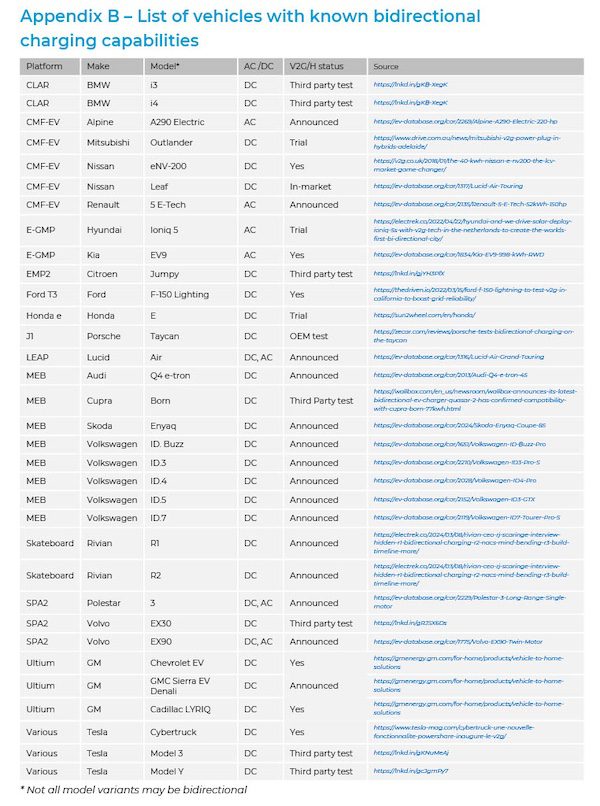Which EVs can do bidirectional charging? In Australia the answer is: Not many

More than 30 electric vehicle (EV) models that can do bidirectional charging are about to be unleashed on the world, but in Australia there are just three and they come with a big price tag.
The full electric Nissan LEAF and Mitsubishi’s plug-in hybrid Outlander can both do full bidirectional charging into the home, a single load, or the grid.
But these models, which use the old CHAdeMO charging technology, are being left behind as Australia shifts to Combined Charging System-based (CCS) technology. Nissan has announced CCS-based bidirectional charging from 2026 in the UK, however.
For buyers wanting to future proof their EV purchase the only alternative on the market today is the Ford F-150 Lightning. But that comes with a $160,000-plus price tag.
Globally, there are eight EV models in production today that support bidirectional charging, according to the ARENA study.
In addition to the Nissan LEAF, Ford F-150 Lightning, and Mitsubishi Outlander, the other models currently in production are the Tesla Cybertruck, three GM vehicles, and the Renault 5 E-Tech Electric in France.
Another 25 models are either announced or have demonstrated bidirectional charging capability.
 Image: ARENA, enx
Image: ARENA, enx
Bidirectional charging is set to become the ‘next big thing’ with Australia targeted to have 300,000 vehicle to grid (V2G) ready electric cars by the end of the decade, and more than two million bidirectional-ready EVs on the road by 2040, according to a new roadmap released last week by the Australian Renewable Energy Agency (ARENA) and Race for 2030.
But the technology, which was approved for use in late 2024, covers a lot of options, from vehicle to grid (V2G), vehicle to homes and buildings (V2H/B), and vehicle to load (V2L).
In the US, the Lightning has been limited to V2H, meaning it can provide an alternate power source for the home but can’t operate as a grid-connected battery.
Australian charger manufacturer RedEarth Energy Storage is reportedly testing its V2G charger with a Lightning ute so in future in Australia it will be able to be both home battery and backup support.
But Australia could be awash with bidirectional charging-equipped vehicles today – if their makers chose to switch on the capability, says Jon Sibley, enx director and an author of the ARENA report.
He says the majority of EVs currently sold in Australia have the hardware needed to support DC bidirectional charging. What’s holding it back is that carmakers have not yet approved, enabled or productised the required software for local mass-market adoption.
The pool of legacy CHAdeMO vehicles in Australia that won’t be able to access the new standardised charging frameworks and equipment is estimated to touch more than 30,000 in the next few years, according to ARENA.
And this is a problem – but not an insurmountable one, the organisation says.
“Some of these customers purchased these vehicles due to their bidirectional capabilities and they have been left stranded by failures in our (AS/NZ 4777.2) standards development and product certification frameworks,” the report says.
“Although not considered a priority by all stakeholders, several considered more could be done to support these customers realise the bidi potential of their vehicles. This could be a low-cost way to achieve faster community awareness and acceptance.”


Rachel Williamson is a science and business journalist, who focuses on climate change-related health and environmental issues.


